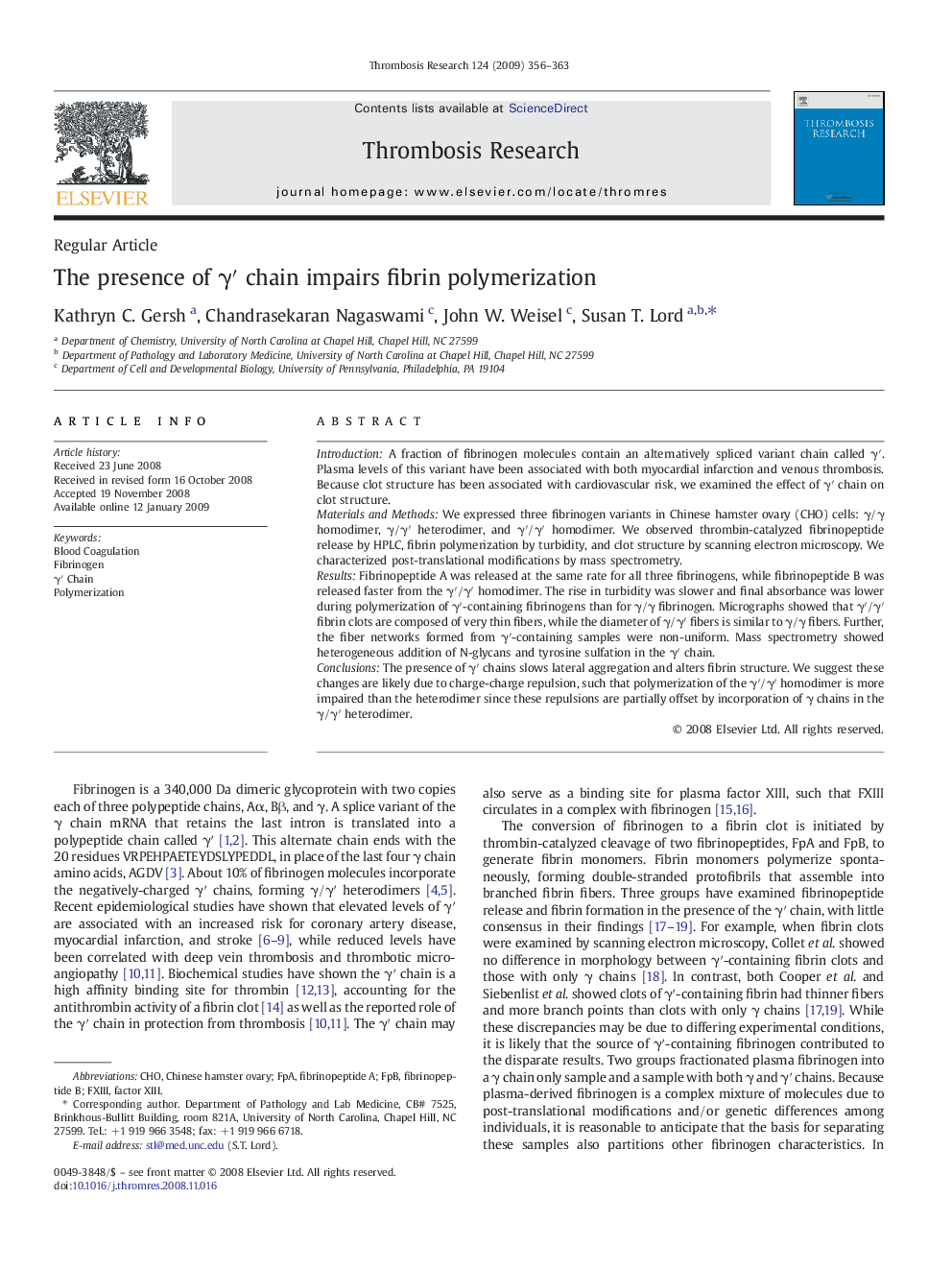| Article ID | Journal | Published Year | Pages | File Type |
|---|---|---|---|---|
| 3029280 | Thrombosis Research | 2009 | 8 Pages |
IntroductionA fraction of fibrinogen molecules contain an alternatively spliced variant chain called γ′. Plasma levels of this variant have been associated with both myocardial infarction and venous thrombosis. Because clot structure has been associated with cardiovascular risk, we examined the effect of γ′ chain on clot structure.Materials and MethodsWe expressed three fibrinogen variants in Chinese hamster ovary (CHO) cells: γ/γ homodimer, γ/γ′ heterodimer, and γ′/γ′ homodimer. We observed thrombin-catalyzed fibrinopeptide release by HPLC, fibrin polymerization by turbidity, and clot structure by scanning electron microscopy. We characterized post-translational modifications by mass spectrometry.ResultsFibrinopeptide A was released at the same rate for all three fibrinogens, while fibrinopeptide B was released faster from the γ′/γ′ homodimer. The rise in turbidity was slower and final absorbance was lower during polymerization of γ′-containing fibrinogens than for γ/γ fibrinogen. Micrographs showed that γ′/γ′ fibrin clots are composed of very thin fibers, while the diameter of γ/γ′ fibers is similar to γ/γ fibers. Further, the fiber networks formed from γ′-containing samples were non-uniform. Mass spectrometry showed heterogeneous addition of N-glycans and tyrosine sulfation in the γ′ chain.ConclusionsThe presence of γ′ chains slows lateral aggregation and alters fibrin structure. We suggest these changes are likely due to charge-charge repulsion, such that polymerization of the γ′/γ′ homodimer is more impaired than the heterodimer since these repulsions are partially offset by incorporation of γ chains in the γ/γ′ heterodimer.
